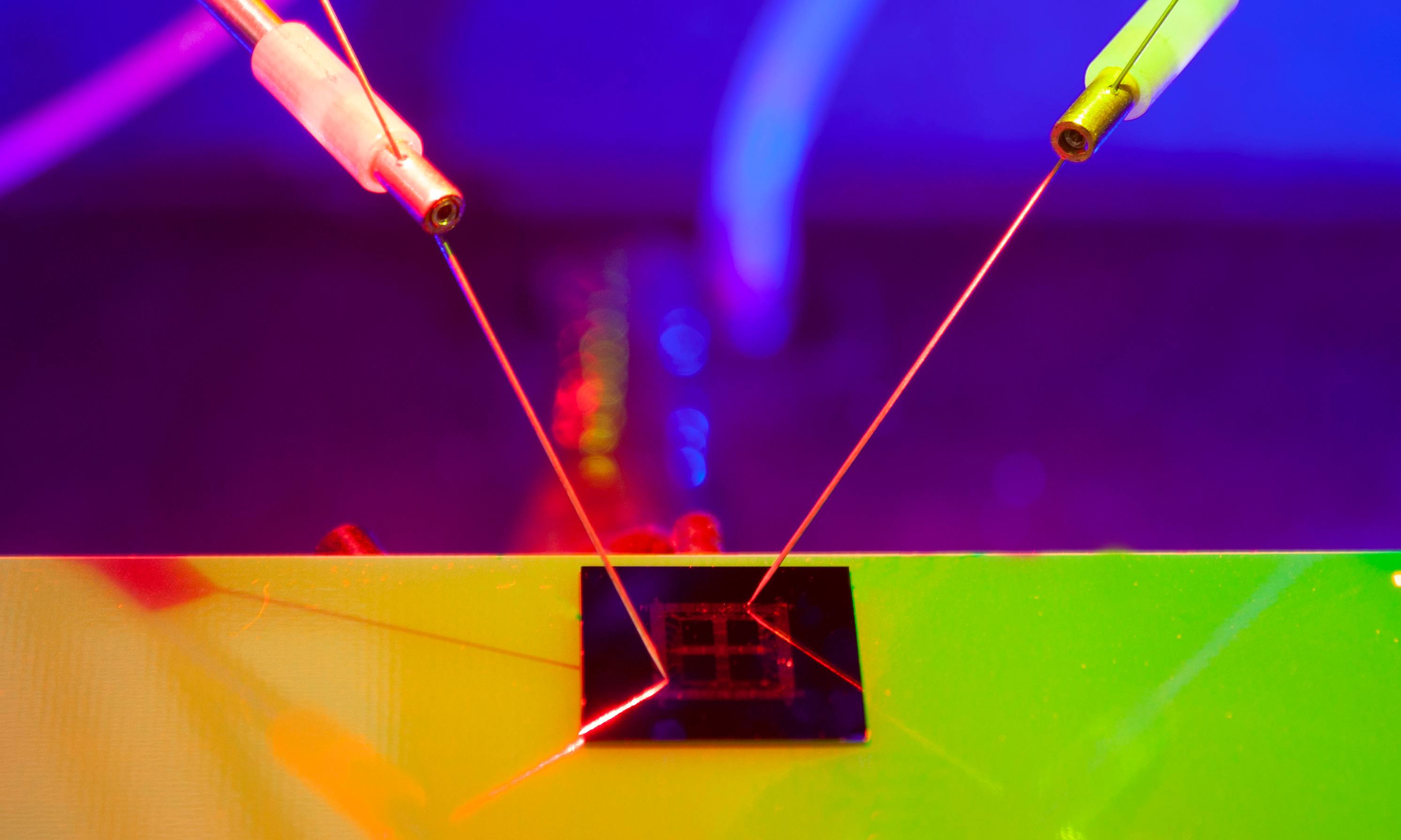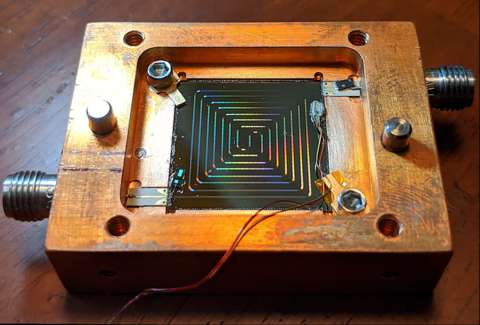(New electronic chip delivers smarter, light-powered AI)
2020/11/18 オーストラリア連邦・ロイヤルメルボルン工科大学(RMIT)

・ RMIT、米国・コロラド州立大学、中国・東北師範大学および米国・カリフォルニア大学バークレー校が、AI コア・ソフトウェアと画像取り込みハードウェアを統合した光駆動のナノスケールデバイスを開発。
・ 人間のように環境から学習できるブレイン・オン・チップの究極のエレクトロニクスの実現に向けた主要な進展で、自律的な AI 主導による意志決定のこれまでにない効率性と高速性を提供する。
・ 同デバイスは、視覚情報を記憶として残す人間の脳のような機能をパワフルな単一のチップで再現することを目指したもの。ニューロ・ロボティクス、より高度なヒューマン・マシーン・インタラクション技術
や、視覚データの記憶、バッファリングと処理能力を備えたスケーラブルなバイオニックシステムに向けた飛躍的な進歩と考える。
・ 開発をさらに進めることで、よりスマートで小型のドローンやロボティクス等の自動運転技術、スマートなウェアラブルや人工網膜のようなバイオニックインプラントの実現の可能性も期待できる。
・ 一般的に AI はソフトウェアやオフサイトのデータ処理に大きく依存しているが、新デバイスは電子ハードウェアとインテリジェンスを統合したオンサイトでの迅速な決定を可能にする。例えば、自動車のドライブレコーダーに新デバイスを取り入れることで、照明や標識やオブジェクトを認識し、インターネットへの接続無しの即時の意志決定が可能に。
・ RMIT が過去に開発した光で記憶を形成・修正する初期のプロトタイプチップをベースとした新デバイスは、画像の自動補正、数字の分類やパターン・画像の認識を 90%超の正解率で実行する。また、従来のエレクトロニクスやシリコン技術にも適合し、エフォートレスな統合も可能。
・ 同デバイスは、身体の電気システムの詳細な研究と光によるニューロンの操作を実現する、バイオテクノロジーの新興ツールであるオプトジェネティクス(光遺伝学)に発想を得たもの。光の波長によって電気抵抗を変える超薄膜 2 次元材料の黒リンで構成され、異なる色の光の照射により画像化やデータの記憶を実行する。
URL: https://www.rmit.edu.au/news/all-news/2020/nov/light-powered-artificial-intelligence
<NEDO海外技術情報より>
(関連情報)
Advanced Materials 掲載論文(アブストラクトのみ:全文は有料)
Fully Light‐Controlled Memory and Neuromorphic Computation in Layered Black Phosphorus
URL: https://onlinelibrary.wiley.com/doi/10.1002/adma.202004207
Abstract
Imprinting vision as memory is a core attribute of human cognitive learning. Fundamental to artificial intelligence systems are bioinspired neuromorphic vision components for the visible and invisible segments of the electromagnetic spectrum. Realization of a single imaging unit with a combination of in‐built memory and signal processing capability is imperative to deploy efficient brain‐like vision systems. However, the lack of a platform that can be fully controlled by light without the need to apply alternating polarity electric signals has hampered this technological advance. Here, a neuromorphic imaging element based on a fully light‐modulated 2D semiconductor in a simple reconfigurable phototransistor structure is presented. This standalone device exhibits inherent characteristics that enable neuromorphic image pre‐processing and recognition. Fundamentally, the unique photoresponse induced by oxidation‐related defects in 2D black phosphorus (BP) is exploited to achieve visual memory, wavelength‐selective multibit programming, and erasing functions, which allow in‐pixel image pre‐processing. Furthermore, all‐optically driven neuromorphic computation is demonstrated by machine learning to classify numbers and recognize images with an accuracy of over 90%. The devices provide a promising approach toward neurorobotics, human–machine interaction technologies, and scalable bionic systems with visual data storage/buffering and processing.



